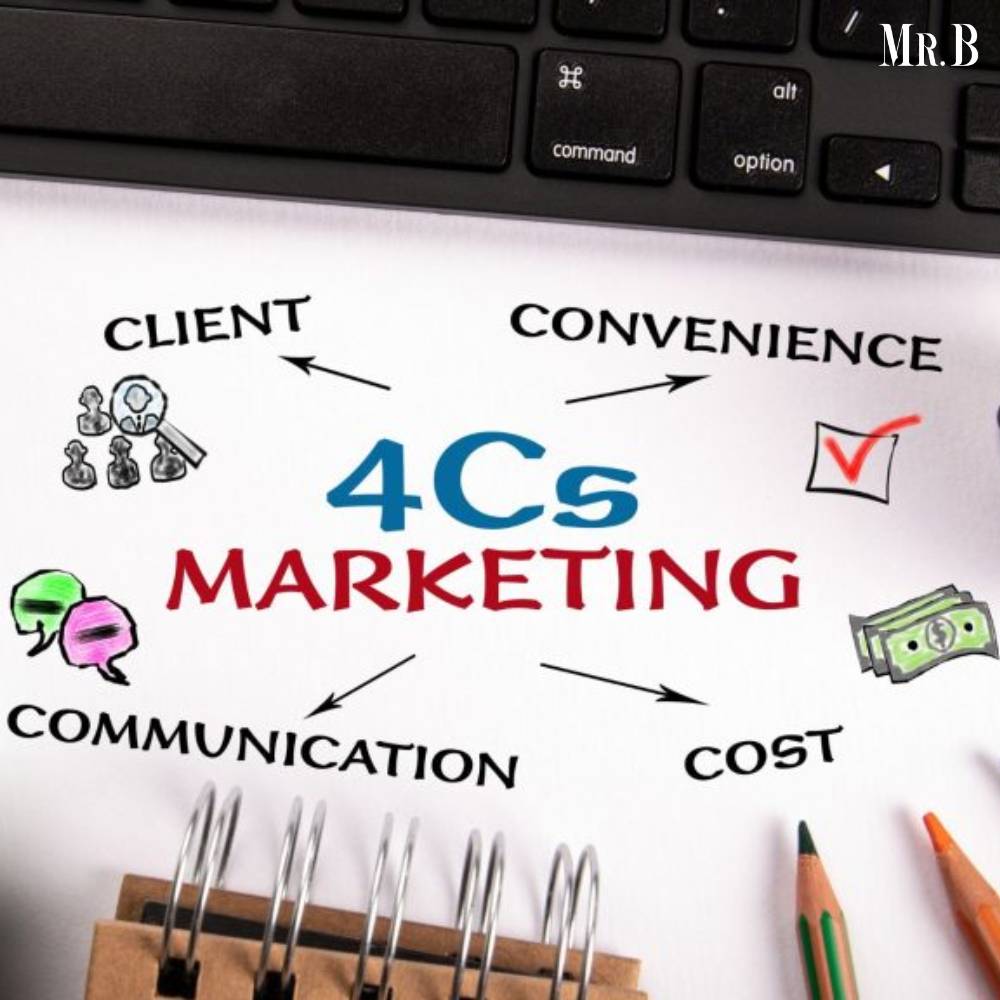Mastering Marketing Excellence: Unveiling the 4 C’s of Marketing
- Category: Marketing

In the dynamic landscape of marketing, staying ahead requires a strategic framework that aligns with the evolving needs of consumers. Enter the 4 C’s of Marketing—a paradigm shift from the traditional 4 P’s. This comprehensive guide unravels the significance of the 4 C’s—Consumer, Cost, Communication, and Convenience—in crafting successful marketing strategies that resonate in today’s fast-paced business environment.
Consumer-Centric Approach: Understanding the First C:
The foundation of the 4 C’s of Marketing lies in prioritizing the consumer. Recognizing that consumers are not just passive recipients but active participants, the Consumer aspect emphasizes understanding their needs, preferences, and behaviors. By placing consumers at the forefront, businesses can tailor products and services that genuinely meet their expectations.
Cost-Oriented Strategy: Delving into the Second C:
Cost, the second C, shifts the focus from traditional pricing to a more comprehensive understanding of the overall cost to the consumer. This involves considering not just the monetary price but also the hidden costs, such as time and effort. Businesses that embrace a cost-oriented approach ensure transparency in pricing, fostering trust and loyalty among consumers.
Communicative Excellence: The Third C Unveiled:
Communication, the third C, emphasizes the importance of clear and effective messaging. In a world inundated with information, businesses must cut through the noise to connect with consumers. Crafting compelling narratives, utilizing diverse communication channels, and fostering meaningful interactions are crucial elements of a communicative strategy that resonates with the target audience.

Convenience as a Cornerstone: The Fourth C’s Significance:
Convenience, the fourth C, acknowledges the busy lifestyles of consumers. It goes beyond mere accessibility to encompass the entire customer experience. From user-friendly interfaces to hassle-free purchasing processes, businesses that prioritize convenience build a competitive edge. Seamless transactions and efficient service delivery contribute to overall customer satisfaction.
Integration of the 4 C’s in Marketing Strategies:
1. Consumer-Centric Product Development:
The Consumer aspect guides businesses in creating products that align with consumer needs and preferences. It involves thorough market research to understand the target audience and adapt offerings accordingly.
2. Cost Optimization for Value Delivery:
Cost considers not only the monetary price but the overall cost to the consumer. Businesses optimize costs to provide value-driven solutions, ensuring that consumers perceive products and services as worth the investment.

3. Effective Communication Channels:
Communication involves selecting channels that resonate with the target audience. Businesses leverage social media, content marketing, and personalized messaging to establish meaningful connections with consumers.
4. Streamlined Convenience in Transactions:
Convenience extends beyond product features to the entire customer journey. Businesses focus on streamlining processes, simplifying transactions, and enhancing user experiences to ensure maximum convenience.
Importance of 4 C’s of Marketing in Research and Innovation:
Fueling Research and Innovation: The Crucial Role of the 4 C’s of Marketing
1. Consumer-Centric Insight:
- Relevance: The 4 C’s place consumers at the core, ensuring research aligns with actual market needs.
- Impact: By understanding consumer preferences, research becomes more targeted and applicable.
2. Cost-Effective Allocation:
- Efficiency: The Cost factor optimizes resource allocation, directing funds towards impactful research endeavors.
- Value: This ensures that research efforts result in solutions providing tangible value to both researchers and end-users.
3. Effective Communication:
- Collaboration: Communication channels facilitate collaboration between researchers and target audiences.
- Understanding: Clear communication builds a shared understanding of research findings, fostering meaningful connections.

4. Convenience in Implementation:
- Adoption: Convenience streamlines the implementation of research outcomes, making it easier for innovations to be embraced.
- User-Friendly: A focus on Convenience ensures that research solutions are user-friendly, promoting seamless adoption.
In essence, the 4 C’s of Marketing bring a strategic framework to research, ensuring it is consumer-driven, cost-effective, communicated effectively, and convenient in its implementation, ultimately leading to impactful and successful outcomes in the realm of research.
FAQs about the 4 C’s of Marketing
Q1: What are the 4 C’s of Marketing?
A1: The 4 C’s of Marketing—Consumer, Cost, Communication, and Convenience—comprise a modern marketing framework that prioritizes consumer-centric strategies, transparent cost considerations, effective communication, and seamless convenience.
Q2: How does the Consumer aspect differ from the traditional ‘Product’ in the 4 P’s?
A2: The Consumer aspect focuses on understanding and meeting consumer needs, going beyond the product itself. It emphasizes building relationships and tailoring offerings based on consumer preferences.
Q3: Why is Cost considered a vital component in the 4 C’s of Marketing?
A3: Cost looks beyond the monetary price to consider the overall cost to the consumer. It involves understanding hidden costs and optimizing pricing strategies to provide value-driven solutions.
Q4: How does Communication play a role in the 4 C’s framework?
A4: Communication involves crafting clear and compelling messages to connect with consumers. It utilizes diverse channels, including social media and content marketing, to establish meaningful interactions and build brand affinity.
Q5: Why is Convenience considered a cornerstone in the 4 C’s of Marketing?
A5: Convenience acknowledges the busy lifestyles of consumers. Businesses prioritize seamless transactions, user-friendly interfaces, and efficient service delivery to enhance the overall customer experience.
Conclusion:
The 4 C’s of Marketing herald a new era in strategic marketing. By embracing a consumer-centric approach, considering overall costs, fostering effective communication, and prioritizing convenience, businesses craft strategies that resonate with the modern consumer. The integration of these four elements ensures a holistic and adaptive marketing framework that not only meets consumer expectations but also builds lasting relationships and fuels sustained success in the ever-evolving business landscape. The 4 C’s of Marketing emerge not just as a paradigm shift but as a guiding philosophy for businesses navigating the complexities of contemporary marketing challenges.







